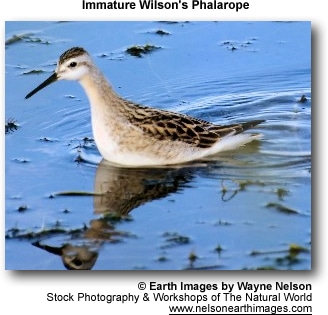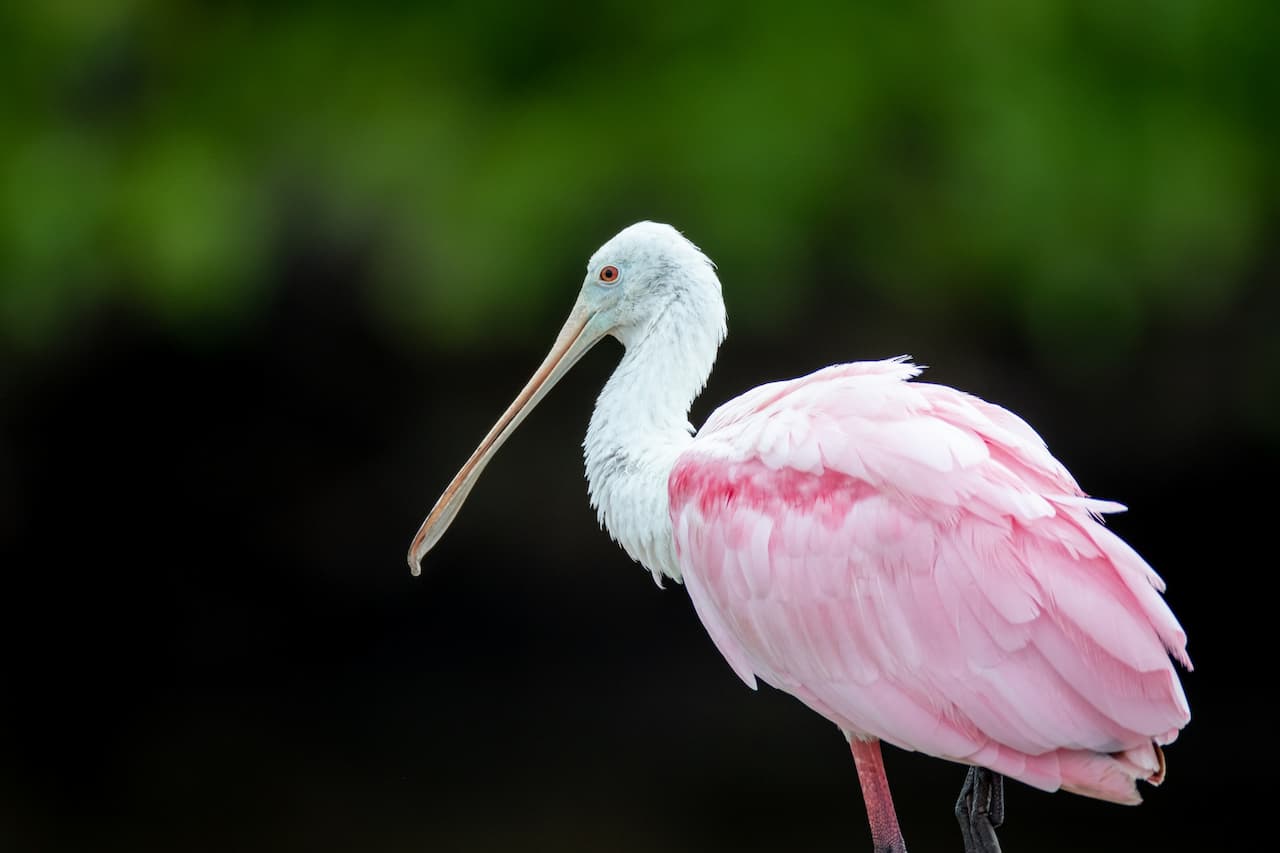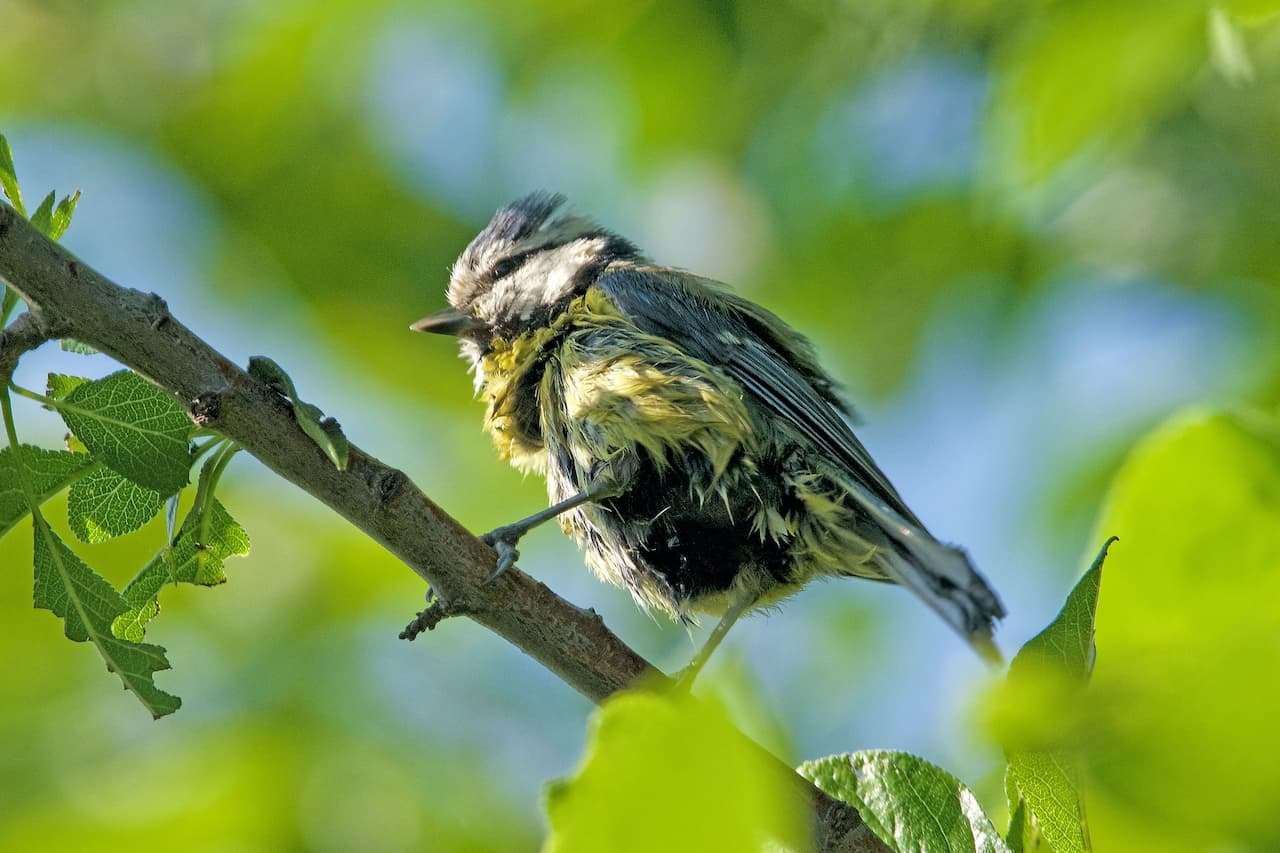Wilson’s Phalaropes (Phalaropus tricolor)
The Wilson’s Phalaropes, Phalaropus tricolor, is a small wader. This bird, the largest of the phalaropes, breeds in the prairies of North America in western Canada and the western United States.
It is migratory, wintering around the central Andes in South America. They pass through Central America around March/April and again during September/October[1]. The species is a rare vagrant to western Europe.
This species is often very tame and approachable. Its common name commemorates the American ornithologist Alexander Wilson. Sometimes, it is placed in a monotypic (one single species) genus Steganopus.
Description
Wilson’s Phalaropes is about 23 cm in length, with lobed toes and a straight fine black bill. The breeding female is predominantly gray and brown above, with white underparts, a reddish neck, and reddish flank patches. The breeding male is a duller version of the female, with a brown back, and the reddish patches reduced or absent.
Young birds are grey and brown above, with whitish underparts and a dark patch through the eye. In winter, the plumage is essentially grey above and white below, but the dark eyepatch is always present.
Ecology and status
Wilson’s Phalaropes are unusually halophilic (salt-loving) and feed in great numbers when on migration on saline lakes such as Mono Lake in California and the Great Salt Lake of Utah, often with Red-necked Phalaropes.
When feeding, a Wilson’s Phalarope will often swim in a small, rapid circle, forming a small whirlpool. This behaviour is thought to aid feeding by raising food from the bottom of shallow water. The bird will reach into the outskirts of the vortex with its bill, plucking small insects or crustaceans caught up therein.
The typical avian sex roles are reversed in the three phalarope species. Females are larger and more brightly colored than males. The females pursue males, compete for nesting territory, and will aggressively defend their nests and chosen mates. Once the females lay their eggs, they begin their southward migration, leaving the males to incubate the eggs. Three to four eggs are laid in a ground nest near water. The young feed themselves.
Although very common, this bird’s population may have declined in some areas due to the loss of prairie wetland habitat. A few staging areas are of critical importance during migration.

Footnotes
- Herrera et al. (2006)
References
- BirdLife International (2004).Steganopus tricolor. 2006 IUCN Red List of Threatened Species. IUCN 2006. Retrieved on 18 September 2007. Database entry includes justification for why this species is of least concernHayman, Peter; Marchant, John and Prater, Tony (1986): Shorebirds: an identification guide to the waders of the world. Houghton Mifflin, Boston. ISBN 0-395-60237-8Herrera, Néstor; Rivera, Roberto; Ibarra Portillo, Ricardo and Rodríguez, Wilfredo (2006): Nuevos registros para la avifauna de El Salvador. [“New records for the avifauna of El Salvador”]. Boletín de la Sociedad Antioqueña de Ornitología 16(2): 1-19. [Spanish with English abstract] PDF fulltext
External links
- Wilson’s Phalarope – Phalaropus tricolor – USGS Patuxent Bird Identification InfoCenterWilson’s Phalarope Information and Photos – South Dakota Birds and Birding



